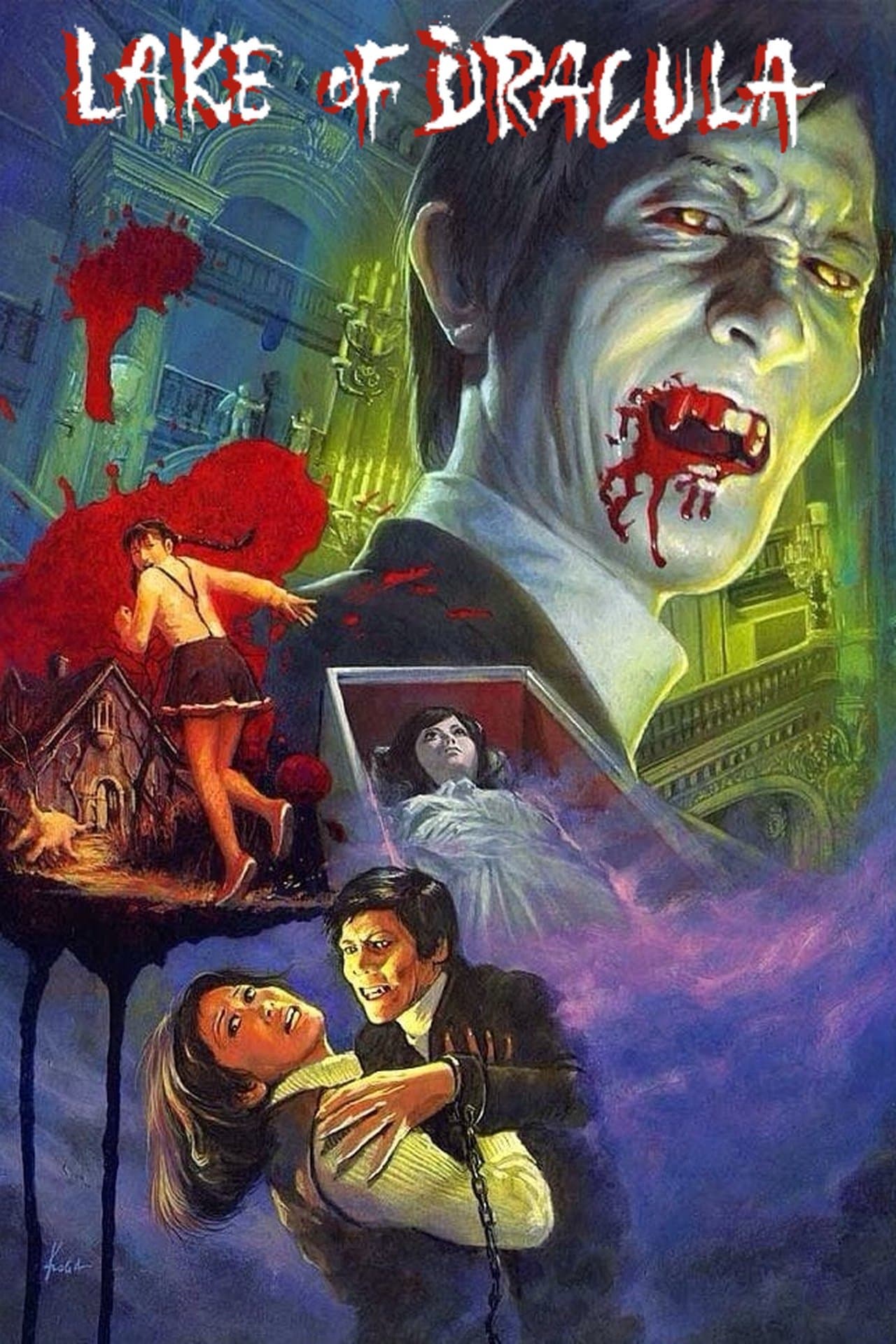
- Genre
- Horror
- Year
- 1971
- Runtime
- 1h22
0
Lake of Dracula
Beauty and blood meet on a moonlit, haunted Japanese shore
Watch Lake of Dracula streaming in
No offers found.
We couldn't find any offers for Lake of Dracula streaming in Malta.
Synopsis
Lake of Dracula (Japanese: 呪いの館 血を吸う眼) is a 1971 Japanese gothic vampire film starring Midori Fujita. The story unfolds with a moody, atmospheric slow-burn that blends family mystery and supernatural dread. Centered on a young woman drawn back toward a lakeside estate, the film builds tension through shadowy cinematography, lingering shots of mist-shrouded water, and a melancholic tone that emphasizes mood over shock. Performances are restrained and theatrical, and the film leans into classical vampire iconography while filtering it through a distinctly Japanese sensibility — melancholia, ritual, and underlying unease. Without relying on fast-cut scares, Lake of Dracula aims to unsettle with sustained atmosphere, gothic production design, and an emphasis on visual storytelling rather than explicit explanation. It’s often appreciated by viewers who favor mood-driven horror and period-style vampire tales.
Cast
Reviews
Critical reception for Lake of Dracula has generally been mixed-to-positive among genre fans and film historians, with many reviewers praising its atmosphere while noting flaws in pacing and narrative clarity. On IMDb, the film holds a rating of 6.2/10, reflecting a range of viewer impressions that often cite the movie’s haunting visuals and slower tempo. Many contemporary retrospectives describe the film as an evocative example of early 1970s Japanese gothic horror: strengths commonly mentioned include its fog-drenched lakeside imagery, period production design, and a melancholic, almost elegiac tone that separates it from more sensational vampire fare.
Critics who are less favorable point to uneven plotting, a deliberate but occasionally lethargic pace, and moments where melodrama undercuts suspense. Some viewers also mention that dubbing and translation issues in international releases can blunt performances and clarity, though original-language presentations tend to retain more of the film’s intended mood. While mainstream aggregator coverage is limited — major aggregators such as Rotten Tomatoes and Metacritic have little to no consensus score for this title — the film has nonetheless attracted appreciation within cult and classic-horror circles. Retrospective write-ups often call it a worthy, if imperfect, entry in Japan’s supernatural cinema of the era, recommending it for fans of atmospheric, stylistic vampire films rather than those seeking modern, fast-paced horror thrills.





